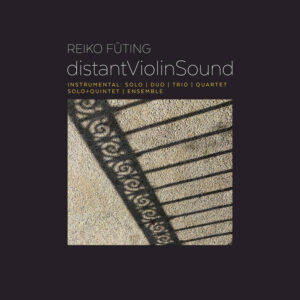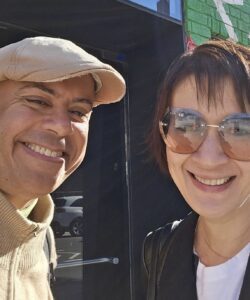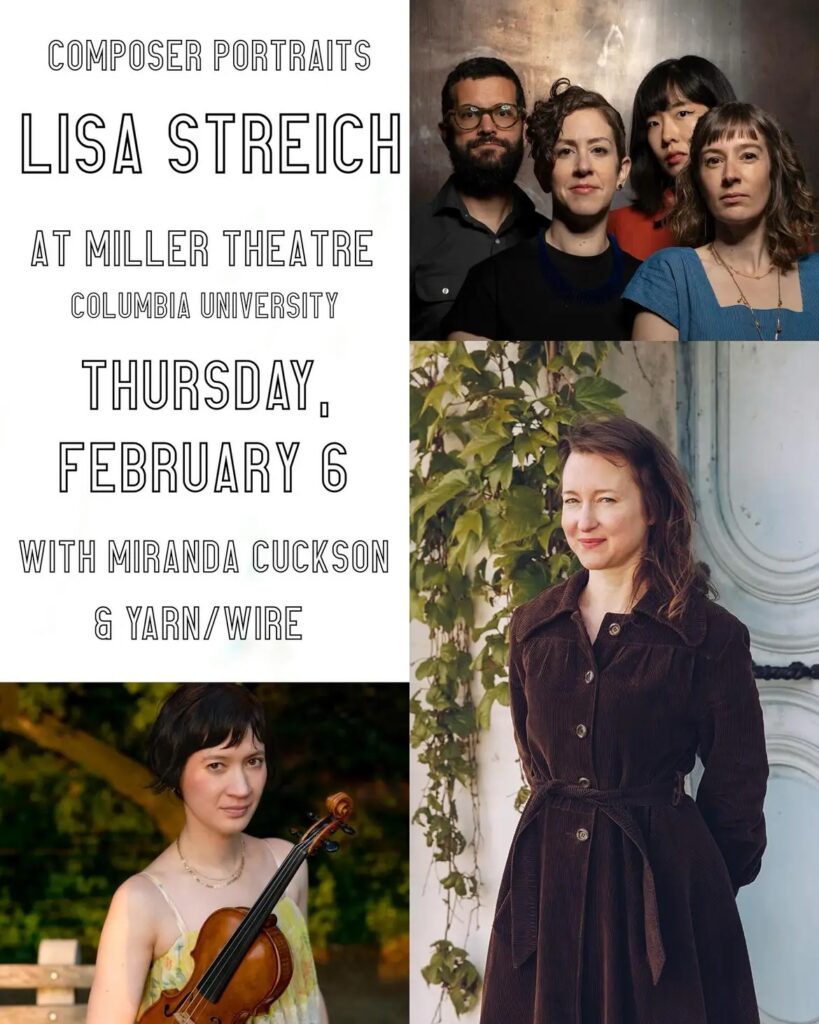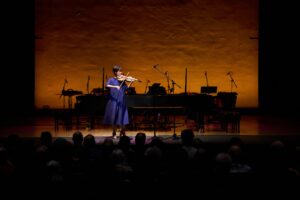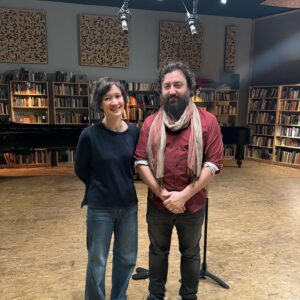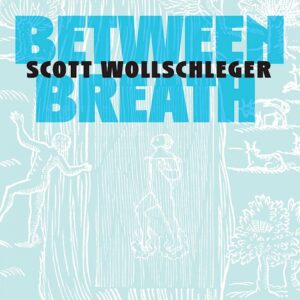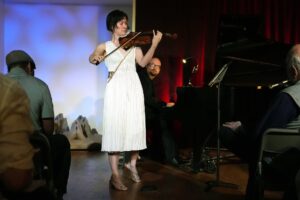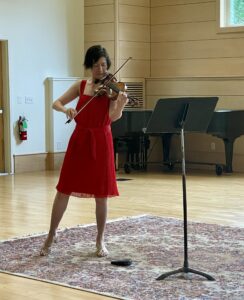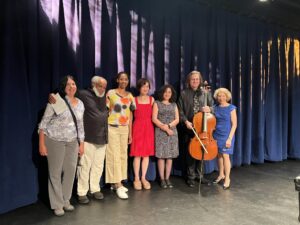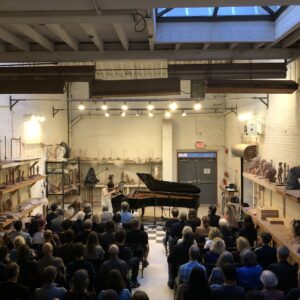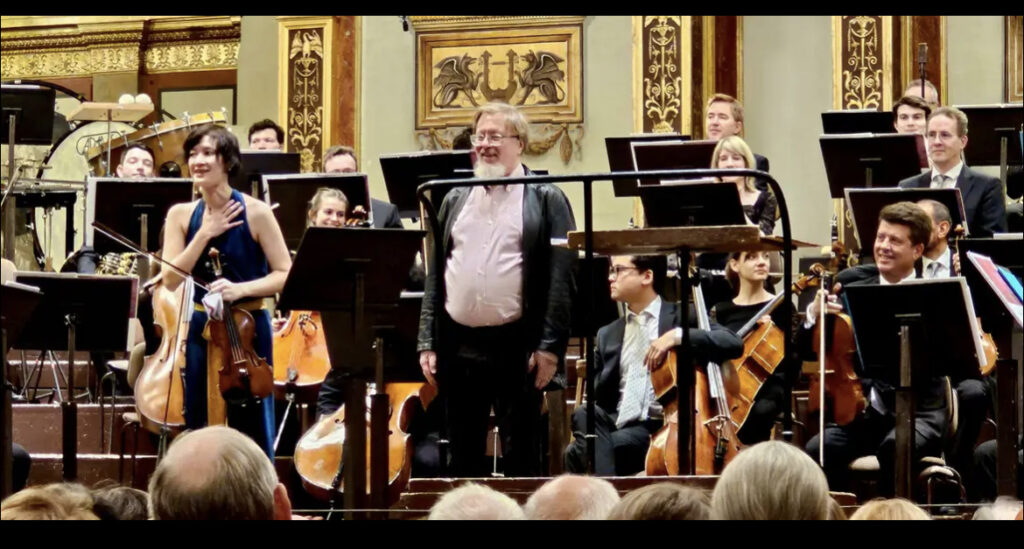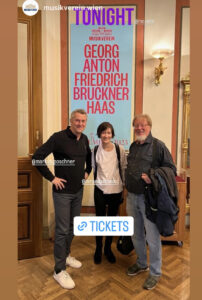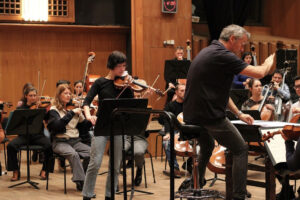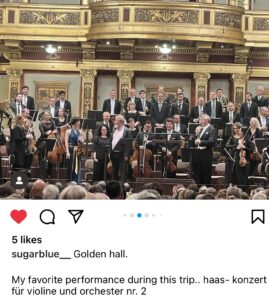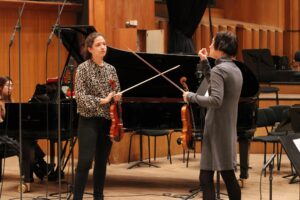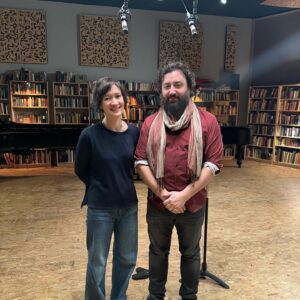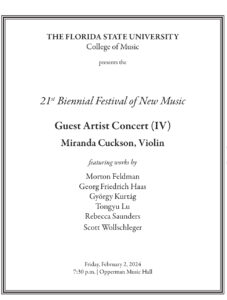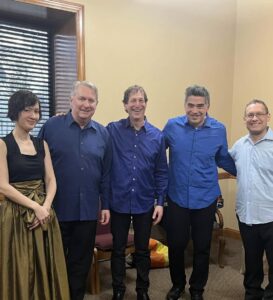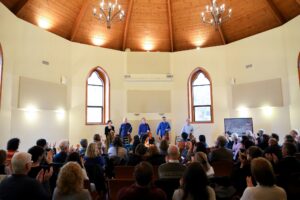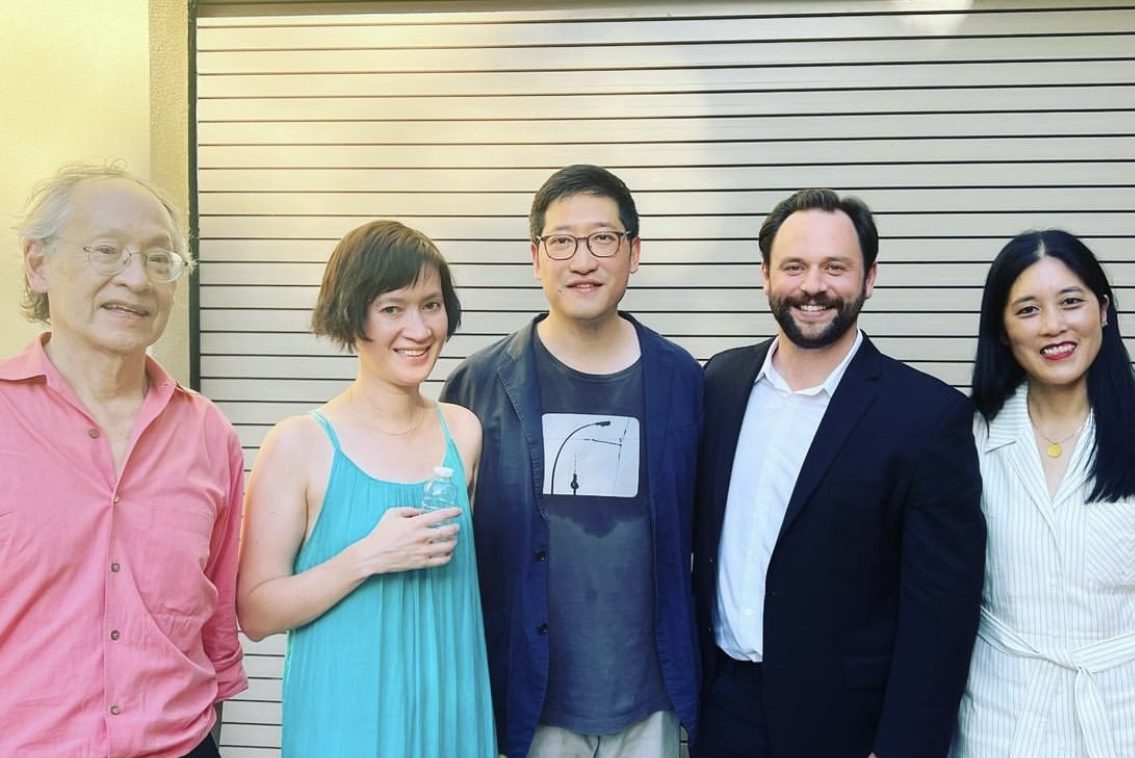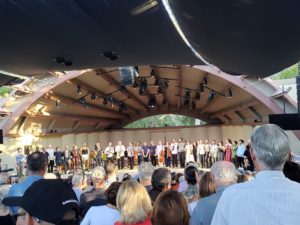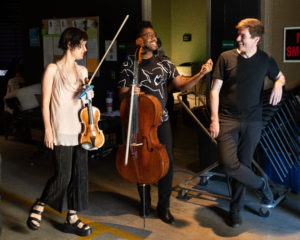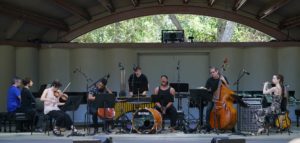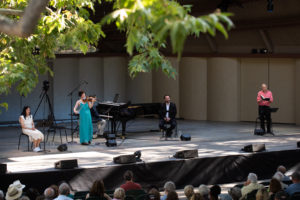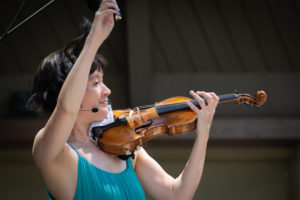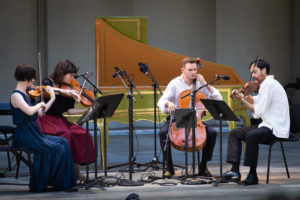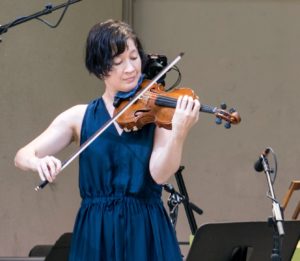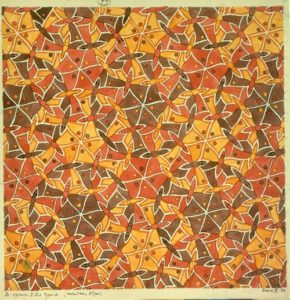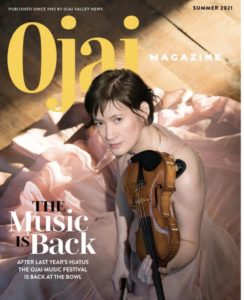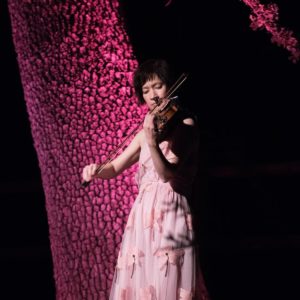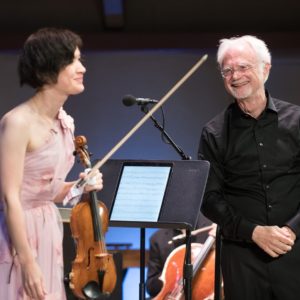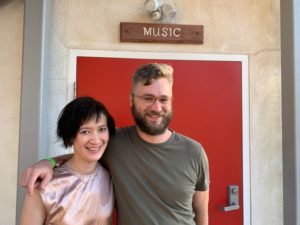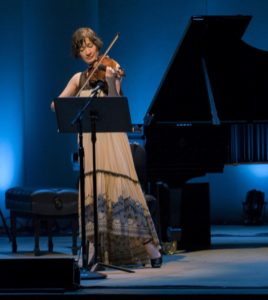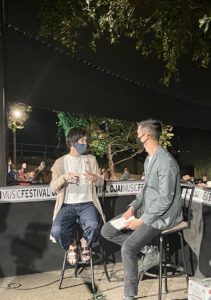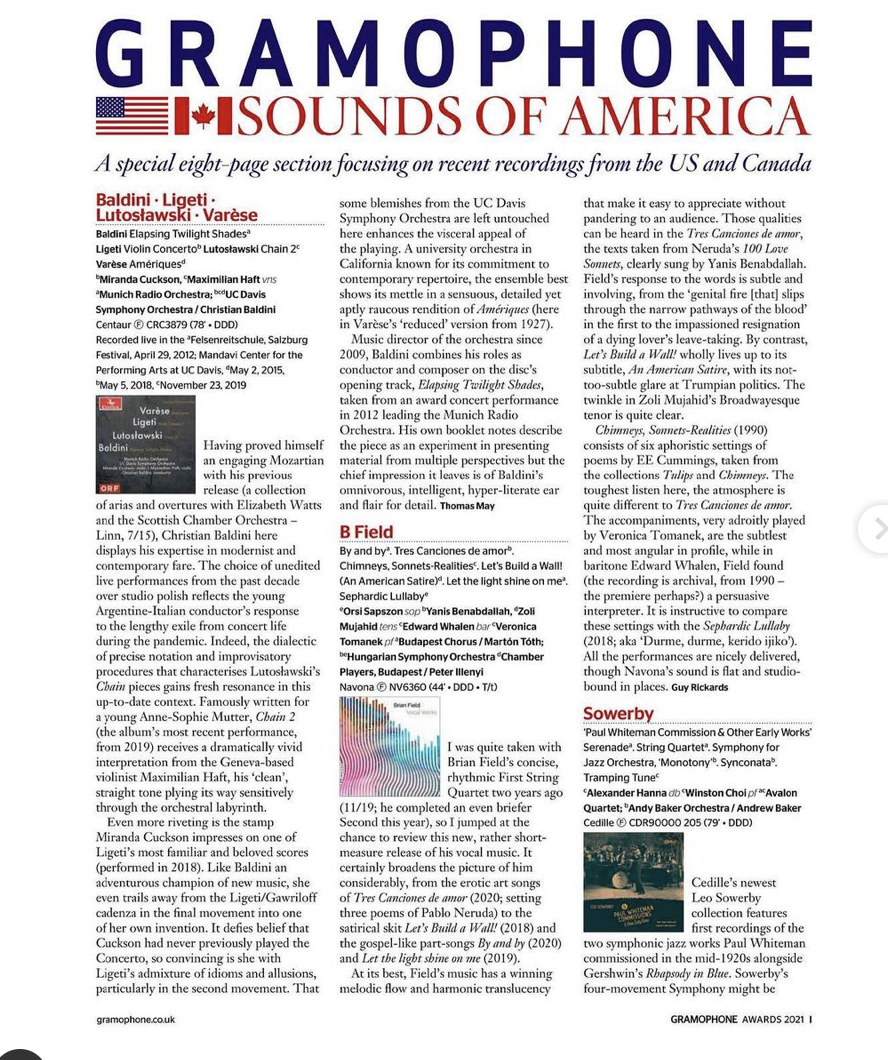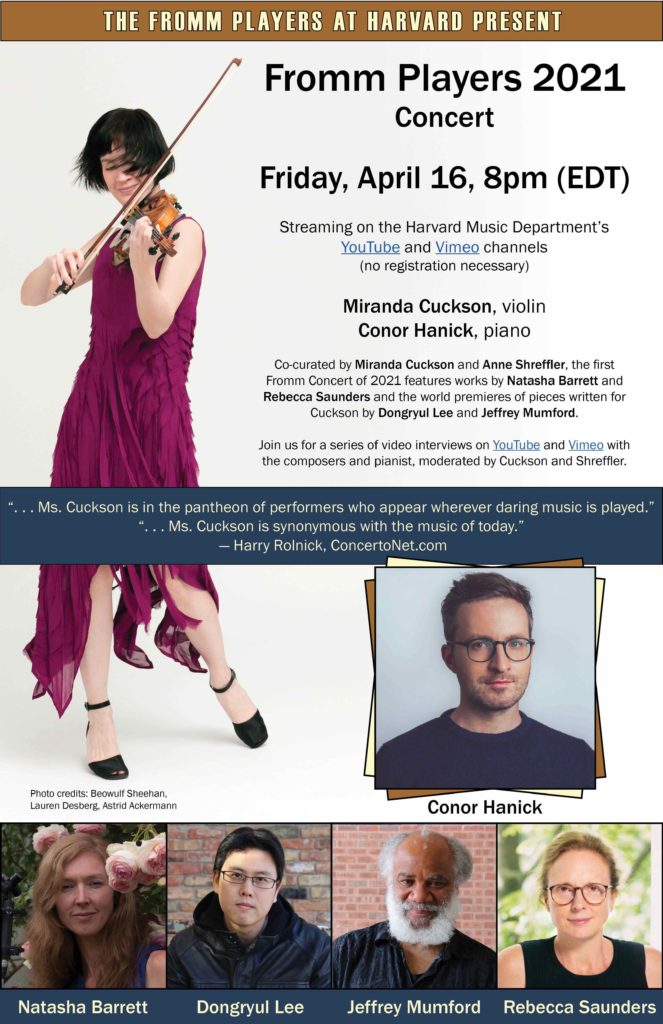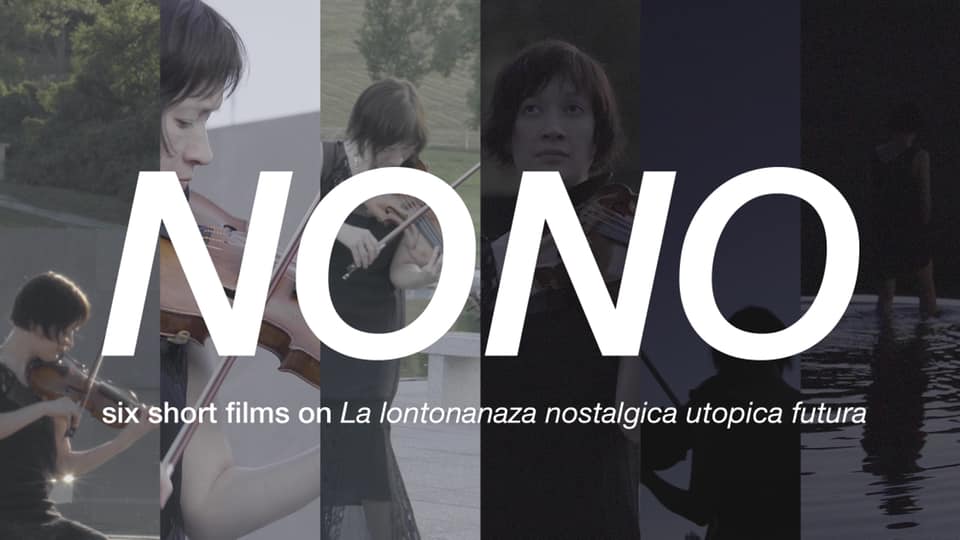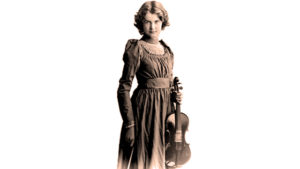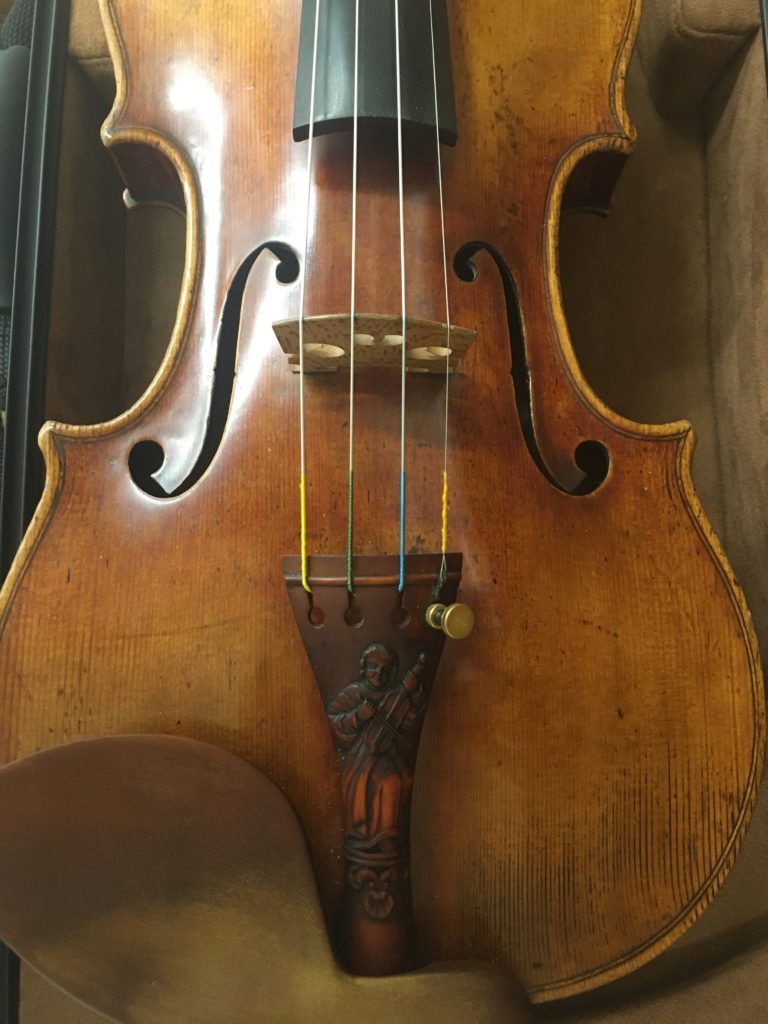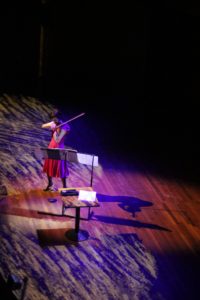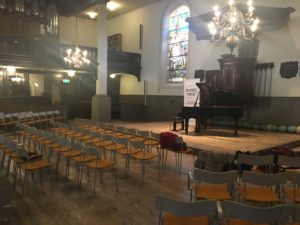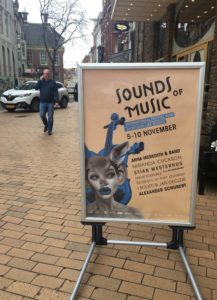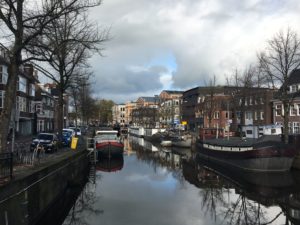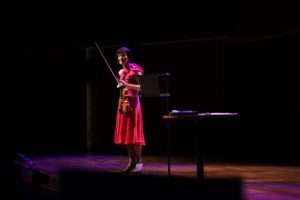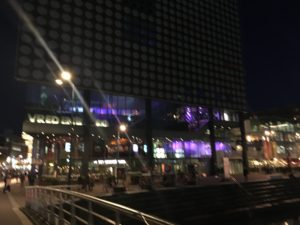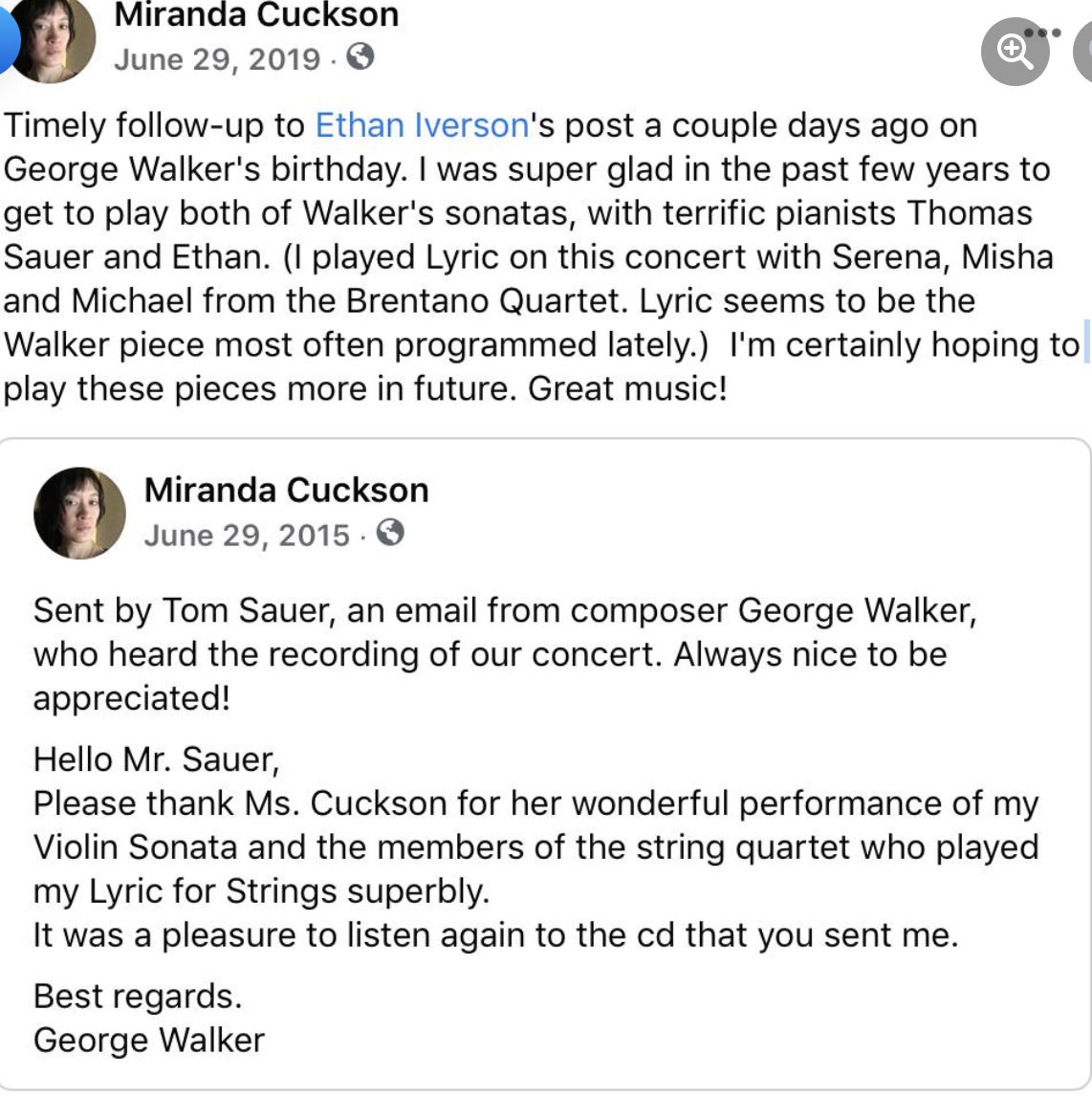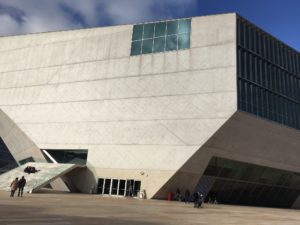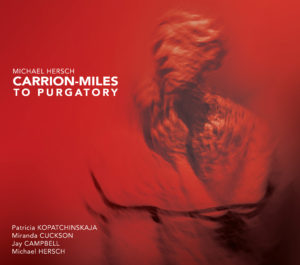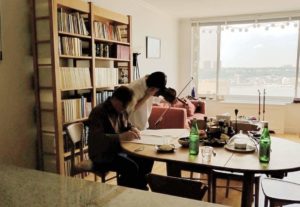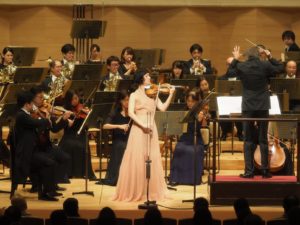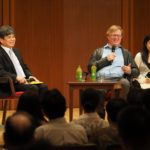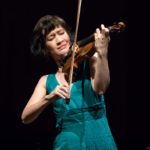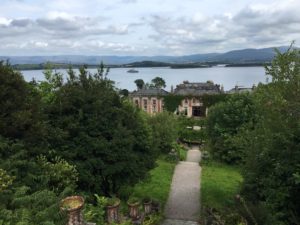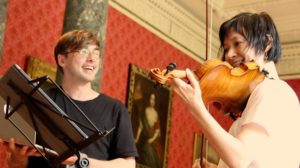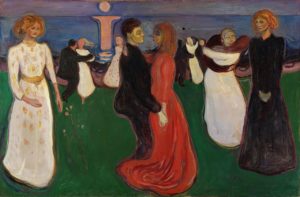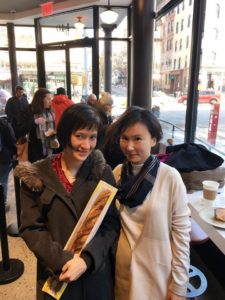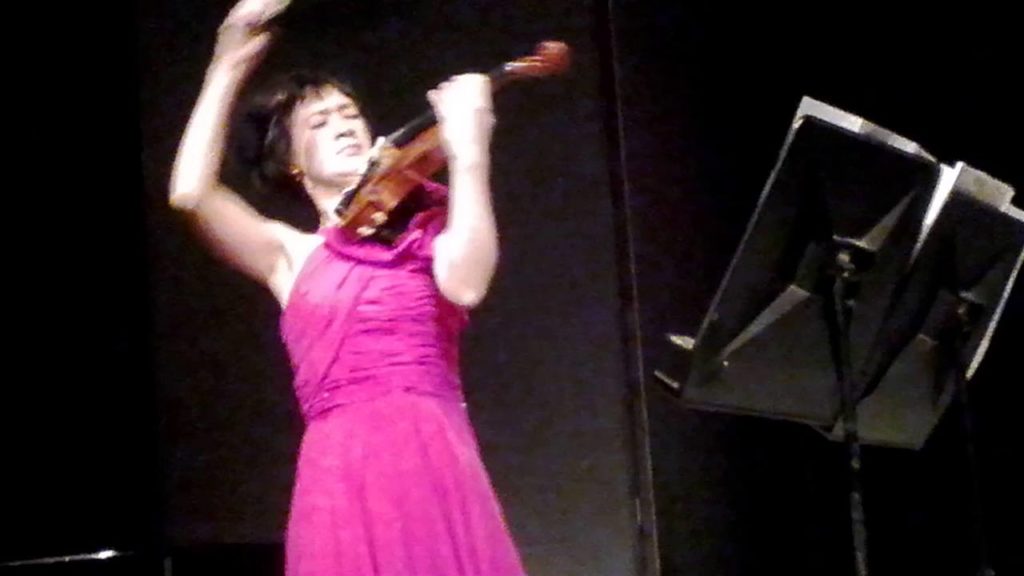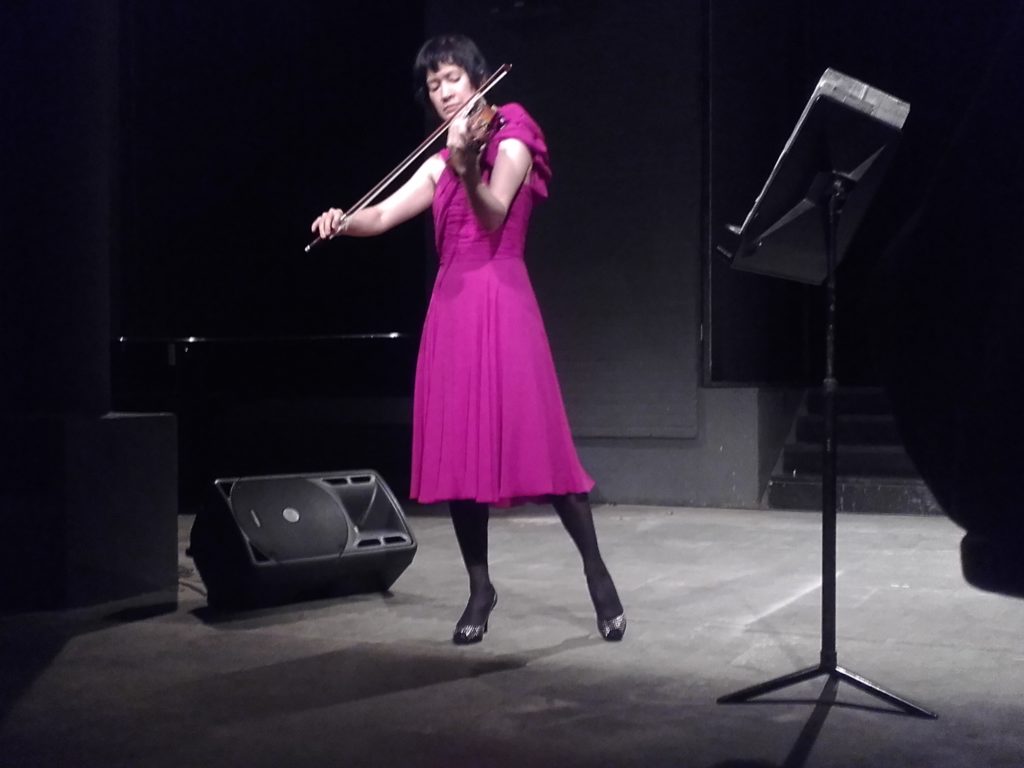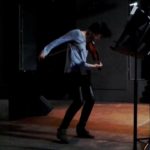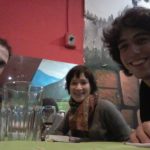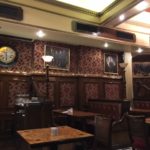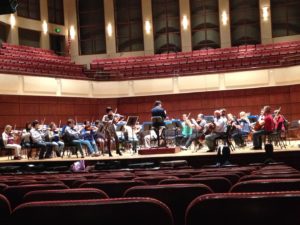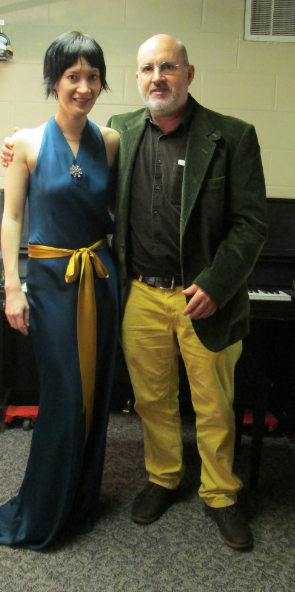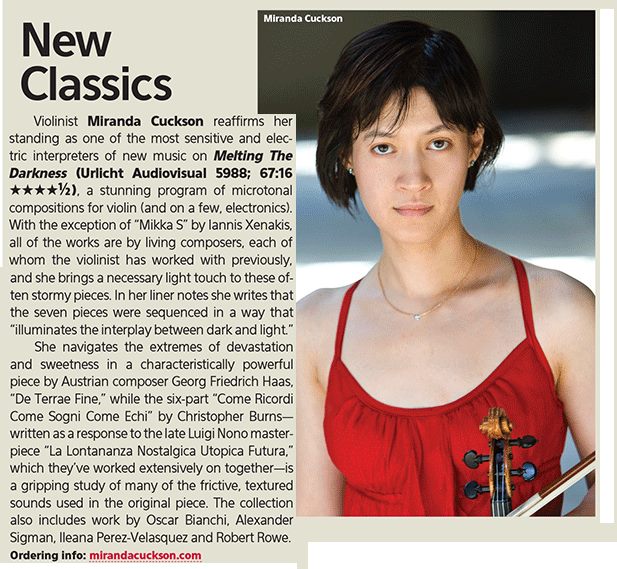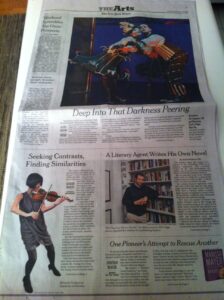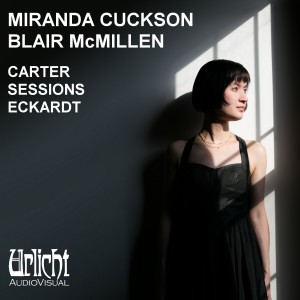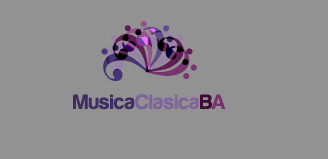A follow-up on the Nono performance:
It was a remarkable experience to perform it live, to move around the space and inhabit the character of the wanderer while dealing with the abstraction of the sounds and timbres: the fragile held tones, the rough outbursts and offhand-sounding phrases, pacing my breaths for the singing, and hearing the tape material emerging gently or jumping out from the speakers. Walking among the audience really took away that “fourth wall” to me – I saw and felt the people in the room as part of the scenario, as participants in the drama.
On Tues. and Wed., I spent a few hours with Chris Burns and composer/sound engineer Richard Warp recording the piece in a studio in Queens. Again, an amazing, unusual experience! We ran the piece a couple times (each run was 50-something minutes), and I found the playing and interaction with the tape part much more exhausting in the studio. The piece is certainly demanding live, not so much in terms of lots of physical busyness and technical hurdles, but because of the concentration and immersion in character that’s required. In the recording studio, I had to keep the theatrical message of the piece in mind, but also bring my focus fully onto the sounds. I realized as I recorded just how much the spatial aspects – my walking around and the spatialization of the speakers – had affected my perception of the music.
The piece has an openness to me, a visceral sense of an arena in which it takes place..it was intriguing to realize how ingrained the spatial dimension was in my musical concept. I love recording because, even as I’m always conscious of playing ultimately for people, in the moment there’s nothing to it but the sound you’re making and the microphone…so simple, pure, intimate and detailed. Any performance, on the other hand, brings in those elements of theater – audience, space, visual factors. Distilling the theater of “La lontananza” into a sound recording, it was very contrasting to concentrate my energy into my static position in the recording booth, to hear the tape sounds in my right ear through a headset rather than from all round the hall, and to be, as Chris put it, “hyperattentive” for almost an hour just to the sounds. Anyway, we now have a couple quite different versions to choose from. Chris and Richard will work some technological magic to configure the spatialized effects of the piece for our “surround-sound” CD. I will be consulted on that but I basically leave those wonders to these guys. They have both been fantastic collaborators.
For the concert, I wrote a program note reworked from my previous blog post- read it below.
Italian composer Luigi Nono (1924-90) was one of the most significant and influential avant-garde artists and philosophers of the 20th century. Early in life, he studied polyphony, the Italian madrigal tradition and the Second Viennese School, and was mentored by Bruno Maderna and Luigi Dallapiccola. During the 1950s, he participated in the Darmstadt courses in Germany, where, along with Pierre Boulez and Karlheinz Stockhausen, he was a visionary leader among composers of new music. His 1955 work, Il canto sospeso, for solo singers, chorus and orchestra, was his first major success. Many of Nono’s compositions put forth pointedly political, anti-fascist themes. Encompassing ideas drawn from philosophy, politics, history and religion, his work strove toward a new kind of music theater, involving text, spatialization, improvisation, sonic references to the real, physical world, and the most current technologies for electronics and amplification. He wrote many large-scale pieces, often involving electronics, including Intolleranza 1960 and Prometeo. Nono had a great impact on other composers, including Lachenmann, Sciarrino, Gubaidulina. Kurtág and Ferneyhough. Nono also formed close working partnerships with instrumentalists, among them Rudolf Kolisch, Gidon Kremer, Maurizio Pollini and the Arditti Quartet.
Nono wrote “La lontananza nostalgica utopica futura” in 1988-89 at the electronics studio of the Strobel foundation in Freiburg. His penultimate composition, it distils many of his lifelong preoccupations into a relatively simple medium. The full title is “La lontananza nostalgica utopica futura. Madrigale per più ‘caminantes’ con Gidon Kremer, violino solo, 8 nastri magnetici, da 8 a 10 leggii.” Nono borrowed the term “lontananza” from Sciarrino, who used the word, usually reserved for poetic expression, in the title of his work “All’aure in una lontananza”. “Lontananza” essentially means “the far distance”. So, Nono’s title is “The nostalgic, utopian, future far-distance. Madrigal for a ‘wanderer” with Gidon Kremer, solo violin, 8 magnetic tapes and 8 to 10 music stands.”
Nono recorded Kremer improvising, then processed the sounds to make the tapes. Also on the tapes are noises from the room as they worked: chairs scraping, objects being slammed down, voices speaking. In performance, the sound artist plays all eight tracks from beginning to end, but chooses which to boost in volume or to suppress – thus, which material to bring into play at a given moment. He/she also controls from which of eight speakers the sounds will emanate. The violinist has six sections of music placed on music stands located around the performance space. He/she is directed by the score to walk from one music stand to the next after playing each section.
Nono took inspiration for this piece from an inscription on the wall of a monastery in Toledo: “Caminante, no hay caminos hay que caminar.” “Wanderer, there is no way, there is only walking.” The “wanderer” is here not only an evocation of a general human condition – of looking for one’s way through life and in society – but also a reference to those displaced by war: emigrants, refugees, “alien” residents in foreign lands. Nono’s use of “musique concrète”- sounds from everyday life – also grounded his music in a political consciousness. The sounds from the work studio are a sonic diary of the work process – thus, an element of nostalgia. Other nostalgic elements are his use of a scale employed by Giuseppe Verdi in his “Quattro pezzi sacri”, and Kremer’s Romanticized style of playing, displaying characteristic 19th-century virtuoso gestures such as jeté and spiccato bowing.
Tonight’s performance features a facet of “La lontananza” that has perhaps never been experienced before by listeners. Nono indicated in the score for the violinist to sing (at the unison, 5th or octave) in parts of the piece. This does not seem to have ever been done. However, it brings a whole other meaningful and beautiful dimension to the piece, emphasizing the humanity of the violinist-figure and the introspective, “serene vision” that lies at the heart of this tumultuous work. I believe that, because Kremer did not vocalize, and he was so integral to the piece’s creation, people have not attempted it. It is possible that a male voice did not sound effective, given the register. However, Nono did not change the score and the indications are there. With the voice, “La lontananza” becomes even more of a human drama: the wanderer’s confrontation with a threatening environment leads her/him to turn inward, finding calm and harmony in what Nono calls a “serena visionata”. The warmth of the human voice contrasts with the hard percussive noises on the tape and with the harshness in the live violin part, specified by Nono’s numerous markings of “ponticello” (a raspy sound from playing on the bridge) and “legno” (a thin, unstable sound from playing with the wood of the bow). Afterward, the wanderer must weather external discord and tumult again, retreating ultimately in a state of uncertainty and becoming a fragile memory.
-MC
